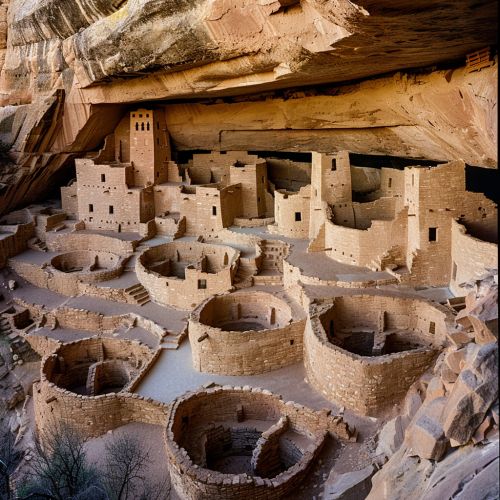Ancestral Puebloans
Introduction
The Ancestral Puebloans were an ancient Native American culture that spanned the present-day Four Corners region of the United States, comprising southeastern Utah, northeastern Arizona, northwestern New Mexico, and southwestern Colorado. They are known for their unique architecture, including cliff dwellings and other structures, which they built during the Pueblo II and Pueblo III eras, from about 900 to 1350 AD.


History
The Ancestral Puebloans are believed to have developed, at least in part, from the Oshara Tradition, who developed from the Picosa culture. They lived in a range of structures that included small family pit houses, larger structures to house clans, grand pueblos, and cliff-sited dwellings for defense. The Ancestral Puebloans possessed a complex network that stretched across the Colorado Plateau linking hundreds of communities and population centers.
Culture
The Ancestral Puebloans held a distinct culture that spanned the Pueblo I, II, III, and IV eras. They were known for their pottery, basketry, and large, complex architectural works. The cultural group has often been referred to as the Anasazi, although the term is not preferred by the modern Puebloan peoples. The word Anasazi is Navajo for "Ancient Ones" or "Ancient Enemy".
Architecture
The Ancestral Puebloans are perhaps best known for the stone and earth dwellings they built along cliff walls, particularly during the Pueblo II and Pueblo III eras. The best-preserved examples of those dwellings are in parks such as Chaco Culture National Historical Park, Mesa Verde National Park, and Bandelier National Monument.
Agriculture
The Ancestral Puebloans were an agricultural people who grew crops such as corn (maize), beans, and squash. They also hunted game and gathered wild foods. The importance of maize in their diet is shown by the presence of corn pollen in their graves.
Decline and Legacy
The reasons for the decline of the Ancestral Puebloan culture are not entirely understood. One possibility is that severe drought and/or climatic changes led to crop failures and starvation. Another possibility is conflict with neighboring tribes. The modern Pueblo peoples are the direct descendants of the Ancestral Puebloans, and many Pueblo tribes still live in the areas their ancestors inhabited.
